Postwar situation
After the war, the Royal Armored Corp was limited to a mere five tank battalions equipped with the heavy Mark V and Medium Mark C. The government allotted a substantial budget to a new, promising design of a heavy amphibious tank, designed by Colonel Johnson of the Tank Design Department, the Medium Mark D.
However, the latter quickly proved far too ambitious and the whole project failed. No public spending was therefore allocated after this experience, but Vickers-Armstrong, already having chosen to follow its own inspiration, designed a new tank, both for internal demand and the export market. Two prototypes had already been built by 1921. The first represented a leap forward compared to wartime designs.
Vickers-Armstrong 1921-22 prototypes
Although the hull was still lozenge-shaped, with many machine-gun ballmounts and side hatches, for the first time, a fully revolving turret was fitted, which was also a three-man design, another innovation dictated by the need of multiple gun ports.
It also had vertical helical springs, a fully compartmentalized 86 hp engine and a revolutionary hydraulic Williams-Jenney transmission. This model was called the Vickers Light Tank, at just 8.5 tons. Another prototype of the time, the Medium Mark C, was turretless, unsprung, but equipped with a 3-pounder (47 mm/1.85 in) and four machine-guns all located in the casemate, with, for the first time, an extra AA mount.
The transmission of the first was dropped in 1922 and replaced by a more conventional one. By 1923, the two prototypes had performed extensive trials at Bovington, and these projects were merged into a final design in 1924, the Medium Mark I.
Medium Mark I design
The A2E1 Vickers Light Tank Mk.I, renamed Medium Mk.I, was a more conventional design, with a low, flat suspension system with five bogies, each with paired small roadwheels, and each sprung by two vertical helical springs of unequal length. There were also two extra tension wheels, at the beginning and the end of the bogie train. At first, the wheels axles proved far too fragile and broke constantly.
Due to frequent repairs, the bogies were left uncovered. This issue was fixed later on the Mark II. The engine was an aviation-derived air-cooled 90 hp Armstrong Siddeley, placed on the left of the driver, while the multiple dry-plate clutch, four-speed gearbox, non-synchromesh transmission was located underneath the commander, at the rear. In fact engine compartmentalization, previously adopted in other models, was not applied in order to allow easier maintenance, a quite retrograde decision.
However, the gearbox allowed a separate epicyclic gear for each track, providing extra emergency torsion. Fuel tanks and oil tanks were located at the rear, feeding the engine by gravity. Speed was limited to 15 mph (24 km/h), with a 120 miles (193 km) range.
The turret was perhaps the biggest innovation in this design, although it was latter dropped, before regaining favor in tank design in the late thirties and early forties. It was large, round, with a sloped top, three-man turret bristling with one QF 3-pdr and two ballmounts housing Hotchkiss machine guns. For the first time the commander was not involved in aiming or feeding the gun, and was left to command only.
This gave a tremendous tactical advantage by the early twenties and made this model another landmark in tank history. The two machine-guns ports were used by a single machine-gun (because of the lack of room), served by the gun loader. He had to switch the mountings depending on the threat. The two other side ballmounts were located at the rear of the hull, also operated in alternation by the mechanic.
Armor plating was minimal, as the 6.25 mm (0.25 in) armor was bolted-on the chassis, barely protecting the crew or the ill-placed fuel tanks. Plus, the tank silhouette was tall.
Production & evolution of the Mk.I
The Mark I was first produced from 1924 to 1926 (30 machines). It was followed by fifty Mark IAs, with thickened side armor plates, for a total of 8 mm (0.31 in). The driver’s hood was split and the turret back plate beveled to ease anti-aircraft fire. Another improvement concerned the engine, which could be now started from outside. Another upgrade, which concerned the Mk.IA and the Mark I alike were the eight reinforced bogies. By 1926, another sixty Mk.IA* (star) were delivered.
All the turrets were modified. The ballmounts were removed and a counterweight was added at the rear, to compensate for a fixed Vickers watercooled machine-gun now being mounted coaxially. A traversable cupola was also added. At last, a dozen or so Mark IA* were reequipped as close support vehicles (CS), fitted with a 15-pounder mortar, used to fire smoke shells. Two prototypes were also tried. One re-engined with a Ricardo 90 hp and another with a wheel-cum-track to increase mobility. The concept was never retained.
As delivered, the 140 machines replaced the Mk.Vs still in service and served in various Royal Tank Regiments until 1938, being phased out for more modern equipment. All but a few were scrapped, after ten+ years of service in maneuvers, never to fire a shot in anger. This was not the case for the next derived model, the Mk.II.
The Mk.II design
Largely based on the previous Mark.I, the second model was nevertheless thoroughly modified. The Mark II Medium was intended to replace the ageing Medium Mark Cs. The chassis, transmission, suspension and even engine, at first, were all kept unchanged. Early experience dictated a complete rebuild of the upper hull. At first, the Mk.IA* back-sloped turret was kept with four ballmounts, all served by a single Hotchkiss (and later Vickers) machine-gun.
The slope was intended for anti-aircraft use. A commander cupola was also installed on the turret. The two rear hull side mountings were also kept unchanged, as well as the main QF 3 pdr (47 mm/1.85 in) gun. However, the front glacis was completely rebuilt. The engine was displaced, received a new ventilation grid, while the driver and co-driver compartment was raised.
The driver visor was higher, providing better peripheral vision. The reinforced bogies were now completely protected by armored side skirts, which are the most distinctive part of the type.
At last, the transmission gear was somewhat improved by a set of Rackham clutches. The armor was also upgraded to 8 mm (0.31 in). All these improvements came at a price. With added weight and the same engine, speed fell to an average 13 to 15 mph (21-24 km/h) at best.
Vickers Medium Mk.II variants
A total of 167 Mark IIs were delivered from 1926 to 1929, but many were rebuilt and improved several times throughout an upgrading process which lasted until 1939. Around 100 Mk.IIs proper were built, of which over fifty-six were modified as the Mk.II* (star).
This version had a single coaxial Vickers machine-gun replacing the older Hotchkiss models, the ballmounts removed, and the commander cupola was shifted sideways to avoid being harmed by cartridge ejection.
The Mark IIA were brand new models (twenty built), with an un-beveled turret and an armored electrical ventilator fan added to the left side. Later, in 1933, they were upgraded to the ** standard. A Mk.II** (1932) was a mass upgrade of the remaining first generation Mk.II to the II* standard, but with a wireless radio and a turret armored basket were added. By 1928, five Mk.IIs were modified and sent in Egypt, “tropicalized” with better ventilation, heat insulation and asbestos plates.
Like the previous series, a dozen Mk.IIA were modified as close-support versions fitted with a 15 pdr (3.7 in) howitzer, provisioned with smoke shells and some HE shells. Two were provided to each company to give them smoke cover.
Special versions
– The Irish army took delivery, in 1929, of a modified Mark D, provided with a 6-pdr (57 mm/2.24 in) gun, four Vickers machine-gun, and a more powerful 170 hp 6-cylinder Sunbeam Amazon engine.
– Two Light Mark IA Special (L) India, were in fact “Females” only provided with machine-guns, and given to the Indian government.
– Four Medium Mark II* Special for Australia in 1929, fitted with a coaxial machine-gun and an extra turret side ballmount.
– Fifteen Medium Mark IIs were purchased by the USSR in 1931. In fact it is unknown if any became operational, they were found in Finland 1941 without guns or equipment.
– Two command tanks were built, one “Mark II Box” converted in 1928 for a brigade commander, and a single Mk.II* fitted with a dummy gun and powerful radio set.
– Three SPGs were also tested, with 75 mm (2.95 in) howitzers and a lengthened chassis.
Sources
About the Vickers Medium Mark I on Wikipedia
Vickers Medium Mark II on Tank-Hunter.com
| Vickers Medium Mk.II specifications | |
| Dimensions | 5.33×2.78×2.82 m (17ft6 x9ft1 x 9ft3) |
| Total weight, battle ready | 11.7 long tons |
| Crew | 5 |
| Propulsion | Armstrong Siddeley V-8, 90bhp@3500 rpm |
| Speed | 15 mph (24 km/h) |
| Range | 120 mi (190 km) |
| Armament | 1 x QF 3 pdr (47 mm/1.85 in) 2 x 0.303 Vickers machine guns (7.7 mm) 4 x 0.303 Hotchkiss model 1914 machine guns (7.7 mm) |
| Armor | From 4 to 6.25 mm (0.16-0.25 in) |
| Total production | 140 Mk.I & 167 Mk.II between 1924-1933 |
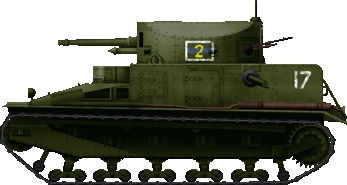
A 1924 Medium Mk.IA, equipped with radio and serving as a command tank during the 1927 manoeuvres at Salisbury plain.
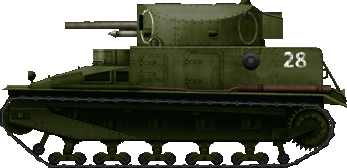
Medium Mk.I CS (Close Support version), usually tasked with creating smoke clouds to mask the tank and infantry advance from the enemy. This concept was still used during the North African campaign, nearly twenty years after.
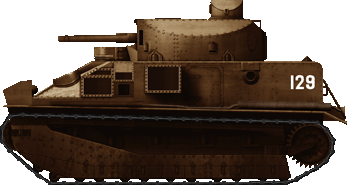
Mk.II* (star). Unknown unit, 1936. Due to their age, the Medium Mk.IIs were phased out in 1938, but there were already five in Egypt since 1930, and a few more were sent in November 1939 for further tests. By June 1940 only a handful were kept for driver training only. When the situation degenerated with the Italian invasion, all existing and serviceable machines were reactivated and rearmed. But it seems that only a single one fought the Italians, dug in as a pillbox, defending a road at Mersa Matruh.
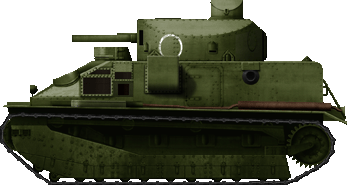
Mk.II CS (Close Support), 1930.
Gallery
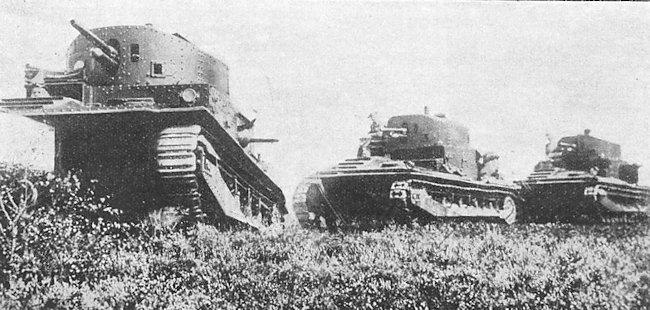
Troop of Vickers Medium Mark II Tank
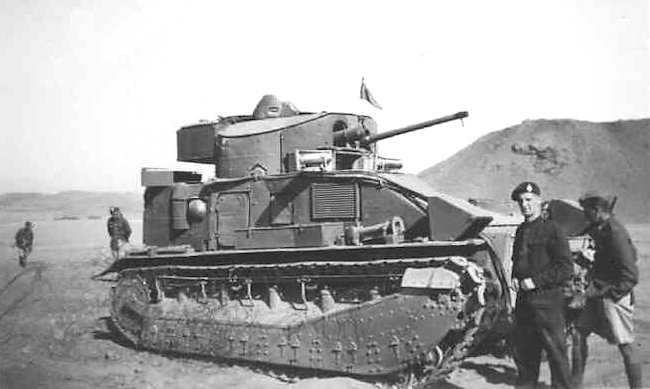
Tropicalized Vickers Medium Mark II Tank in Egypt, 1936
Surviving Tanks
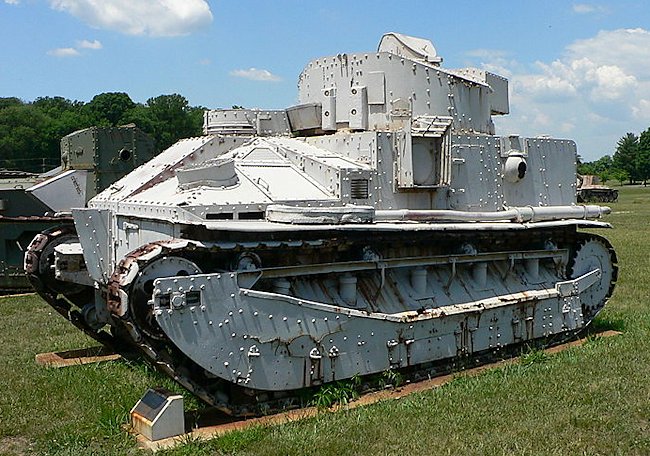
A Vickers Medium Mk.IIA Tank preserved in America
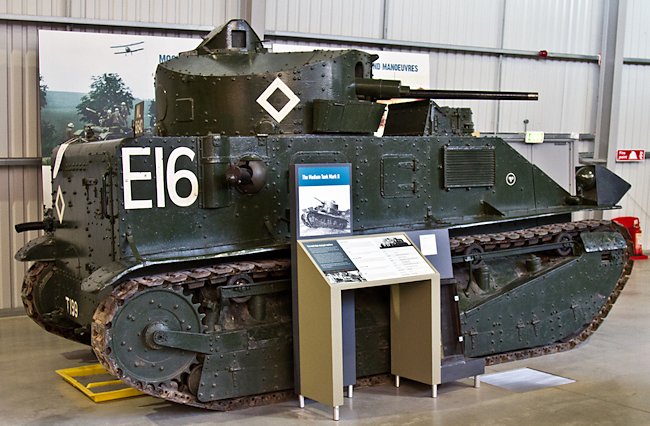
Surviving Vickers Medium MkII tank at the Tank Museum, Bovington, England
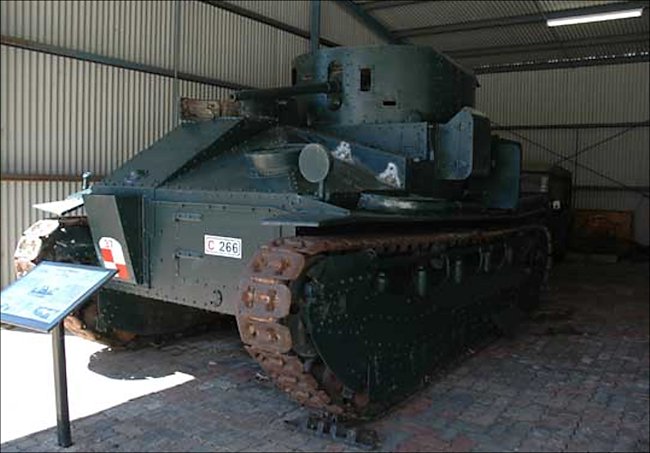
British Vickers Medium MkII tank at the RAAC Memorial, Army Tank Museum, Puckapunyal, Victoria, Australia

WW2 Tanks




























WW2 tanks posters

All Tiger tanks liveries.

Panther liveries and variants

WW2 Armour - All tanks











Tanks aces and single tanks series

Find more there

Museums, Movies, Books & Games
The Tanks and Armor in pop culture
Tanks and armored vehicles in general are only really grasped when seen first person: The mass, the scale, it's all there. Explore also the way tanks were covered in the movie industry, in books and in video games.Movies:
Best tanks movie on warhistoryonline.com
On imdb.com
On bestsimilar.com/
miltours.com
liveabout.com/
watchmojo.com
Video Games:
pcgamesn.com
historyhit.com
levvvel.com
vg247.com/best-tank-games
mmobomb.com/
alienwarearena.com

